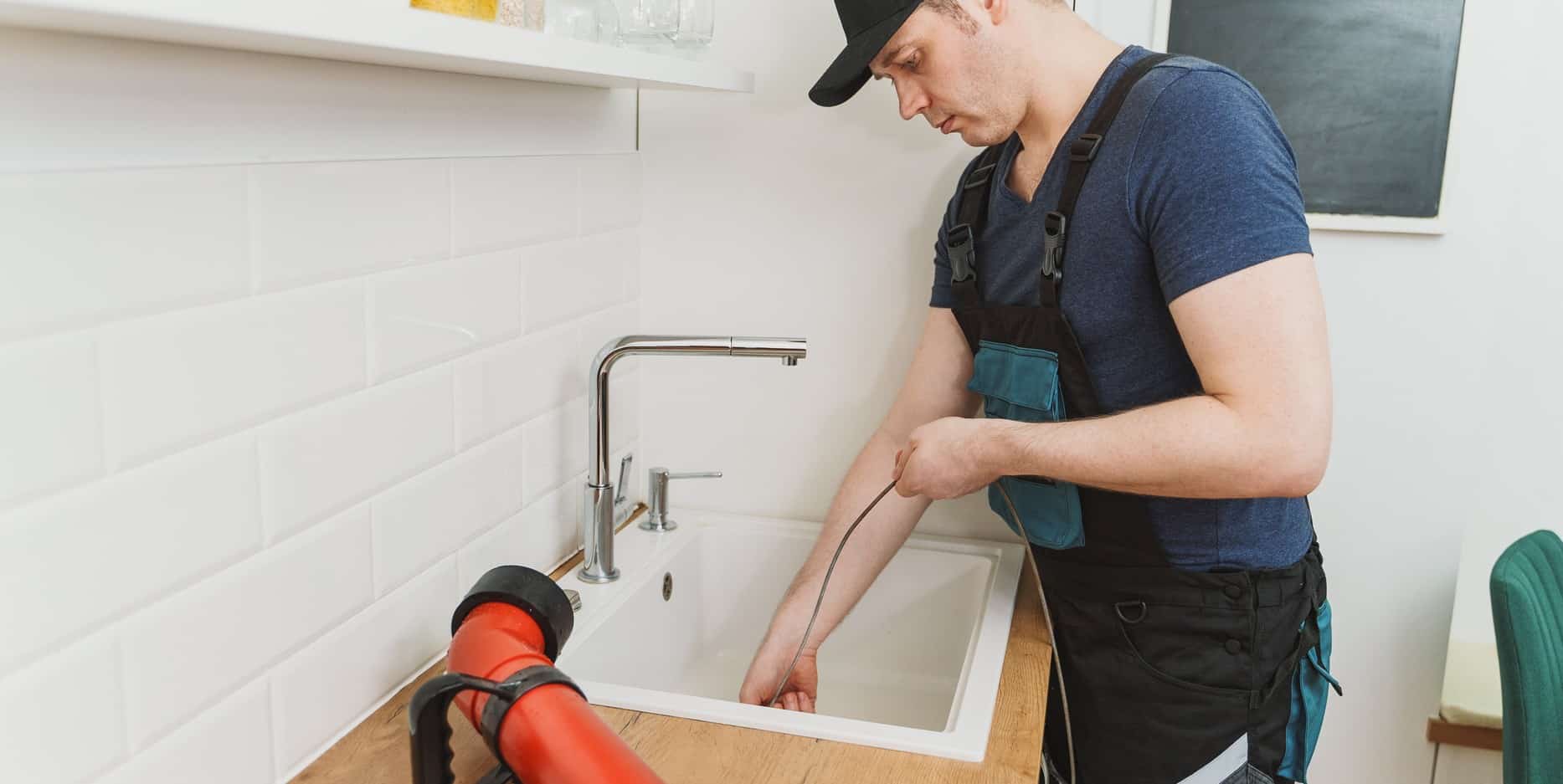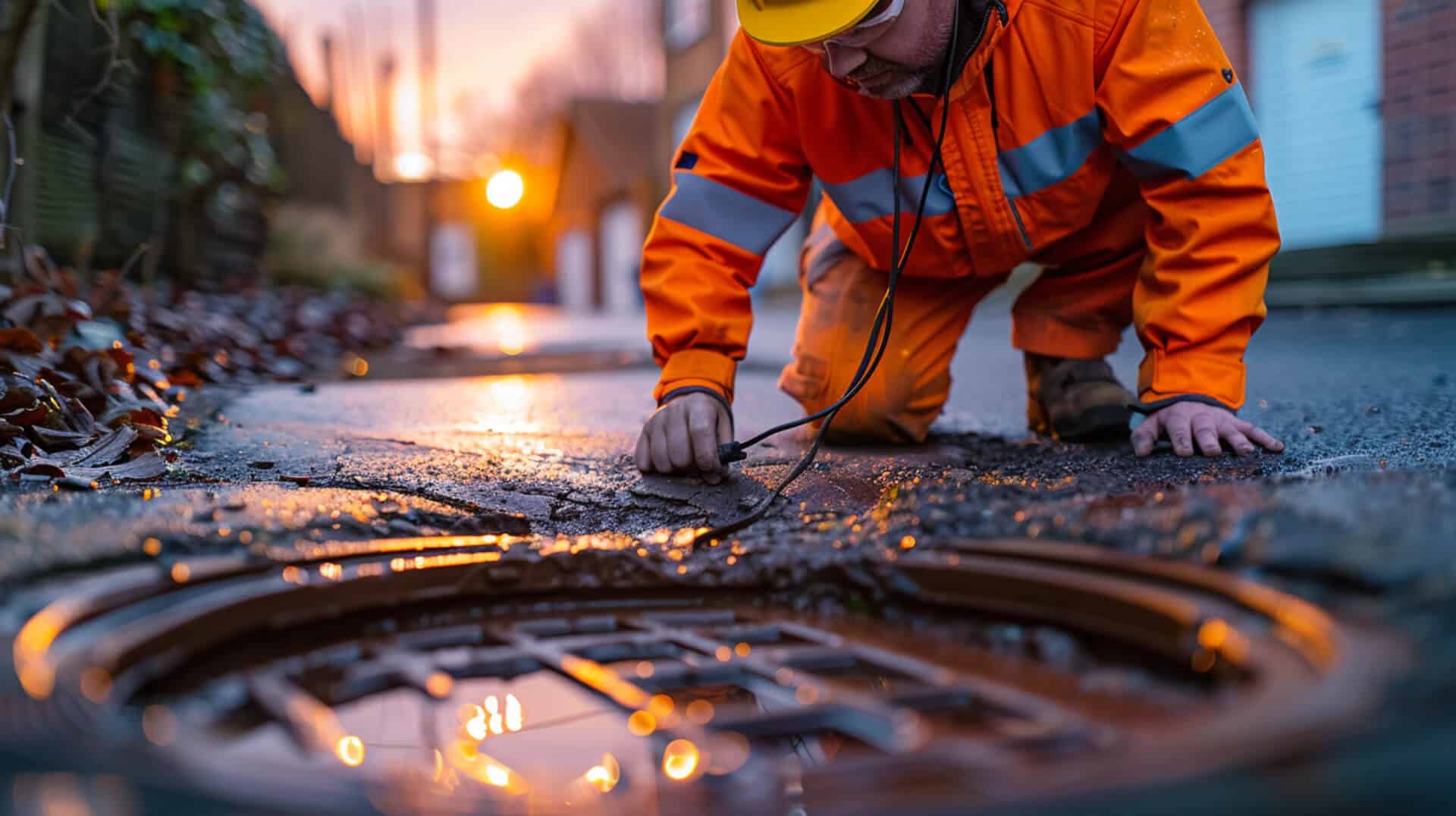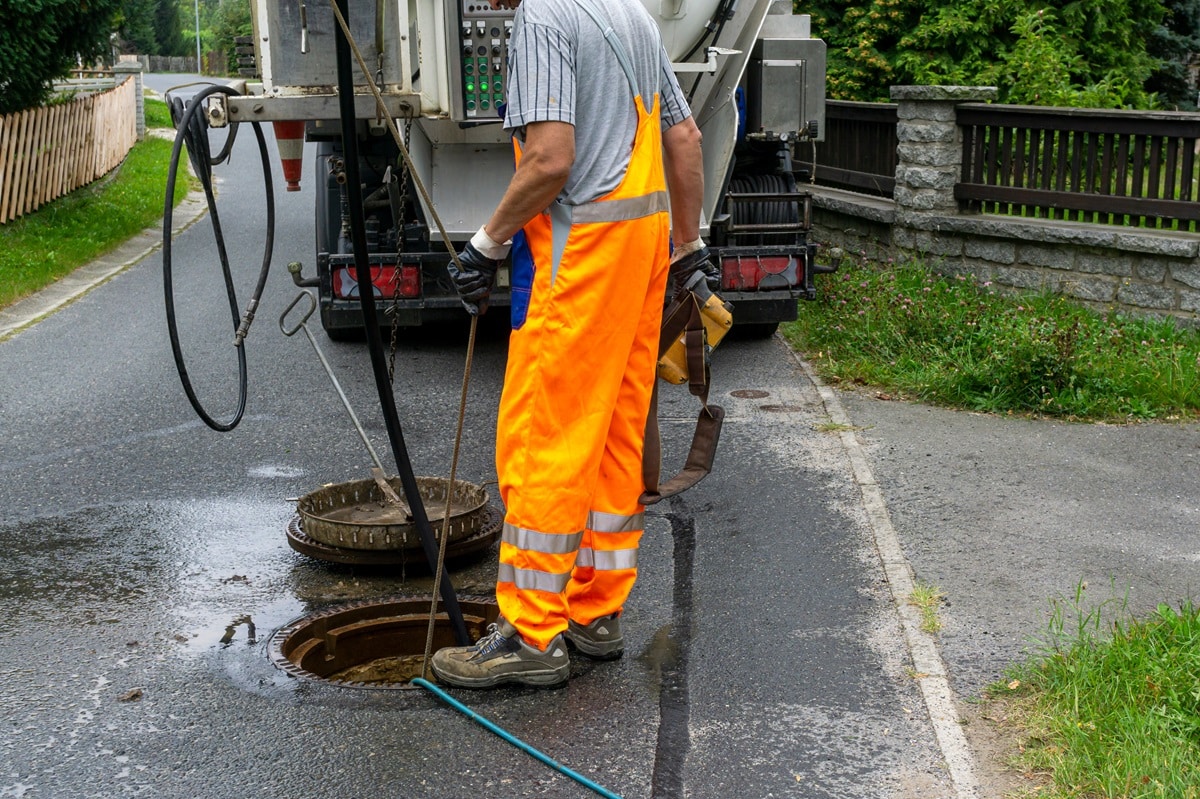 Old Pipes: Understanding Their Role in Drain Blockage
Old Pipes: Understanding Their Role in Drain Blockage
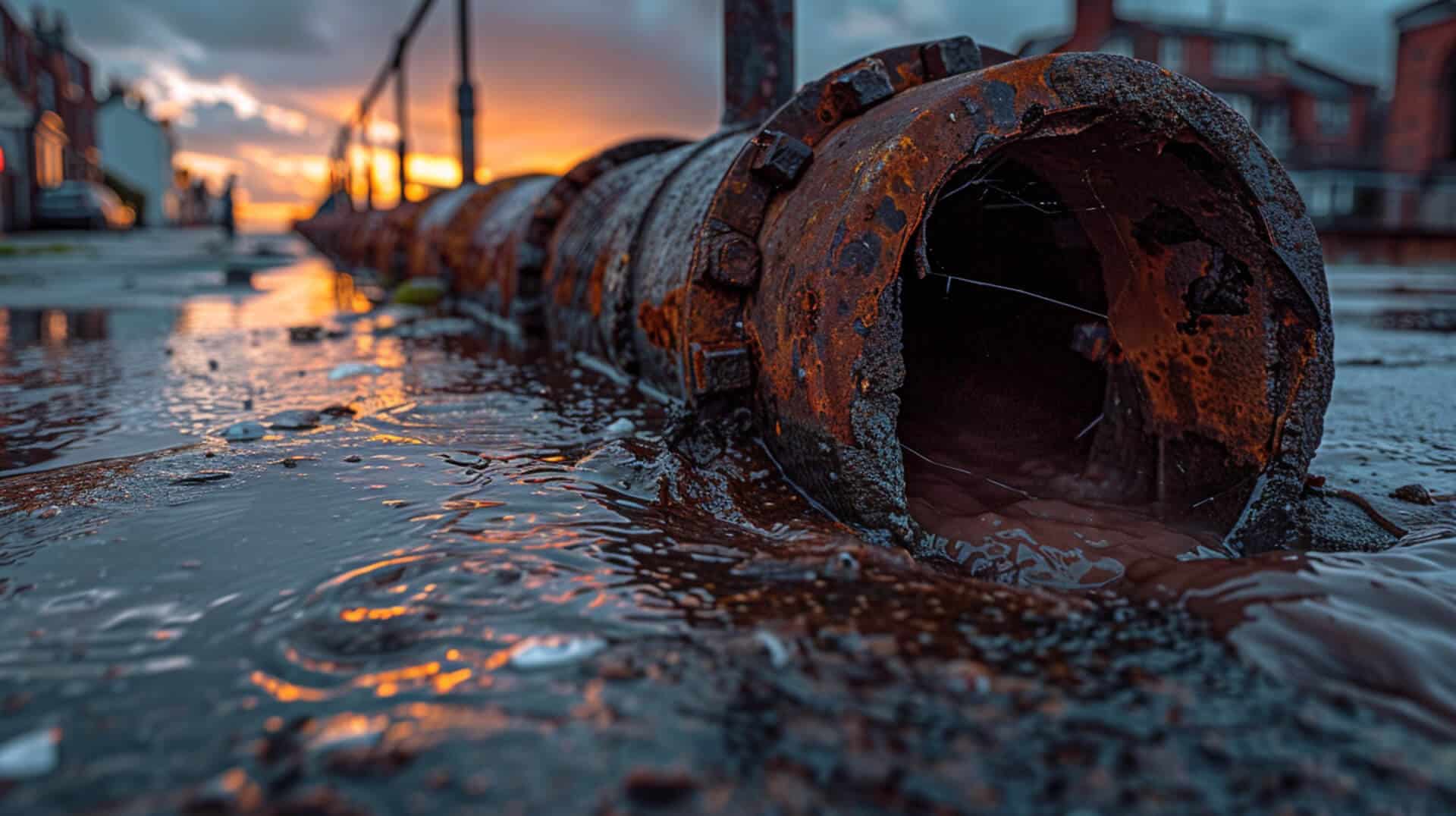
What Will Be Covered in This Guide?
Blocked drains in old pipes are a common issue that can lead to significant problems for property owners, business owners, and facility managers. Understanding the causes of these blockages is crucial for effective maintenance and prevention. This guide will cover the following key points:
Common Causes of Blocked Drains in Old Pipes
Old pipes are particularly susceptible to blockages due to various factors. This section will explore the most common causes, including:
- Ageing Pipes: Wear and tear, material degradation, and lack of maintenance.
- Tree Roots: Infiltration and damage caused by tree roots.
- Mineral Build-Up: Deposits of calcium and magnesium, especially in areas with hard water.
- Foreign Materials: Debris, stones, leaves, and unsuitable objects like wipes and diapers.
- Pipe Freezing: Damage caused by freezing and thawing cycles.
- Heavy Rain and Storms: Overwhelming drainage systems.
- Incorrect Pipe Installation: Errors in installation leading to misalignment and collapse.
Importance of Understanding These Causes
Knowing the common causes of blocked drains in old pipes is essential for several reasons:
- Preventive Maintenance: Helps in planning regular maintenance to avoid blockages.
- Cost Savings: Reduces the need for expensive emergency repairs.
- Health and Safety: Prevents health risks associated with blocked drains.
- Property Protection: Avoids damage to property caused by drainage issues.
How This Guide Can Help
This guide aims to provide practical information and solutions for managing and preventing blocked drains in old pipes. It will offer:
- Preventive Measures: Tips for regular maintenance and proper waste disposal.
- DIY Solutions: Safe methods for addressing minor blockages.
- Professional Services: When and how to seek professional help for severe blockages.
- Technical Solutions: Advanced tools and techniques used by professionals to clear blockages.
By understanding the causes and implementing the preventive measures discussed in this guide, property owners, business owners, and facility managers can effectively manage and prevent blocked drains in old pipes.
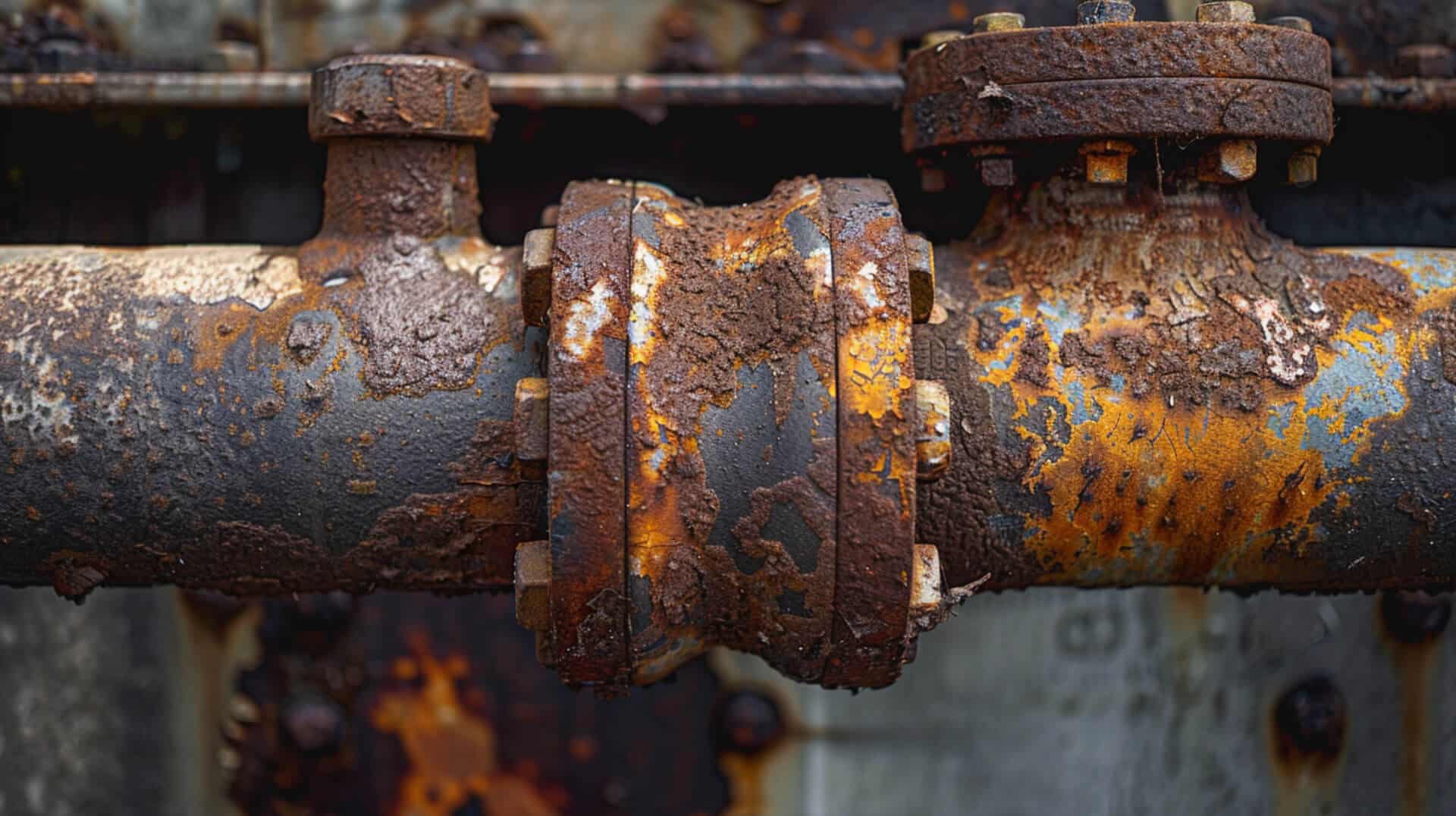
Understanding the Importance of Drain and Sewer Systems
Efficient drain and sewer systems are crucial for modern properties. They ensure the proper disposal of excess water and waste, maintaining hygiene and preventing environmental contamination. Neglecting maintenance of these systems can lead to significant issues, including health risks and property damage.
Why Efficient Drain and Sewer Systems Are Essential
Efficient drain and sewer systems are vital for:
- Hygiene: Proper waste disposal prevents the spread of diseases.
- Environmental Protection: Prevents contamination of soil and water sources.
- Property Integrity: Avoids water damage to structures and foundations.
Consequences of Neglecting Maintenance
Neglecting maintenance can result in:
- Blockages: Accumulation of debris and waste can obstruct water flow.
- Health Risks: Stagnant water and waste can harbour harmful bacteria and pests.
- Property Damage: Water overflow can damage walls, floors, and foundations.
Impact of Blocked Drains on Health and Property
Blocked drains can have several adverse effects:
- Health Hazards: Exposure to contaminated water can cause illnesses.
- Structural Damage: Persistent blockages can lead to water seepage, weakening building structures.
- Unpleasant Odours: Accumulated waste produces foul smells, affecting indoor air quality.
Role of Old Pipes in Drainage Issues
Old pipes are particularly susceptible to drainage issues due to:
- Wear and Tear: Ageing pipes can develop cracks and leaks.
- Material Degradation: Older materials like clay and cast iron are prone to corrosion and breakage.
- Tree Root Infiltration: Roots can penetrate and obstruct older pipes more easily.
Regular maintenance and timely replacement of old pipes are essential to prevent blockages and ensure the efficient functioning of drain and sewer systems.
Ageing Pipes: Wear and Tear
Ageing pipes are a common cause of blocked drains, particularly in older properties. Understanding how the ageing process affects pipes can help in identifying and mitigating potential issues.
How Does the Ageing Process Affect Pipes?
As pipes age, they undergo various forms of degradation that can lead to blockages and other drainage issues. The primary factors include:
- Corrosion: Metal pipes, such as those made from cast iron or galvanised steel, are prone to rust and corrosion over time.
- Material Fatigue: Repeated stress and pressure changes can weaken pipe materials, leading to cracks and leaks.
- Joint Deterioration: The connections between pipe sections can degrade, causing misalignment and potential blockages.
What Materials Are Most Susceptible to Wear and Tear?
Certain materials are more vulnerable to ageing and wear:
- Cast Iron: Prone to rust and corrosion, leading to reduced internal diameter and blockages.
- Clay: Susceptible to cracking and root infiltration.
- Galvanised Steel: Corrodes over time, causing blockages and leaks.
What Are the Signs of Ageing Pipes Leading to Blockages?
Identifying the signs of ageing pipes can help in early intervention:
- Slow Drainage: Water takes longer to drain from sinks, tubs, and toilets.
- Frequent Blockages: Recurrent clogs in the same locations.
- Discoloured Water: Rusty or brown water indicates corrosion.
- Leaks and Dampness: Visible water damage or damp areas around pipes.
How Can Regular Maintenance Mitigate These Issues?
Regular maintenance is crucial in preventing blockages caused by ageing pipes:
- Routine Inspections: Regularly check for signs of wear and tear.
- Cleaning and Descaling: Remove mineral build-up and debris.
- Pipe Relining: Reinforce existing pipes with a new lining to prevent leaks and blockages.
- Replacement: Replace severely degraded pipes with modern materials like PVC or copper.
By understanding the impact of ageing on pipes and implementing regular maintenance, property owners can prevent blockages and ensure the longevity of their drainage systems.
Tree Roots and Their Impact on Old Pipes
Tree roots are a significant cause of blockages in old pipes. Understanding how they infiltrate and damage pipes can help in preventing and addressing these issues.
How Do Tree Roots Infiltrate and Damage Pipes?
Tree roots seek out moisture and nutrients, making sewer and drainage pipes an attractive target. They can infiltrate pipes through:
- Cracks and Joints: Roots enter through small cracks or loose joints in ageing pipes.
- Pipe Material: Older materials like clay and cast iron are more susceptible to root penetration.
- Expansion: Once inside, roots expand, causing blockages and further damage.
What Types of Trees Are Most Likely to Cause Problems?
Certain tree species are more prone to causing pipe blockages due to their aggressive root systems:
- Willows: Known for extensive root systems that seek out water sources.
- Poplars: Fast-growing roots that can quickly infiltrate pipes.
- Maples: Roots spread widely and can penetrate pipes.
What Are the Signs That Tree Roots Are Causing Blockages?
Identifying the signs of root infiltration can help in early intervention:
- Slow Drainage: Water drains slowly from sinks, tubs, and toilets.
- Frequent Blockages: Recurrent clogs in the same locations.
- Gurgling Sounds: Unusual noises from drains indicate trapped air due to blockages.
- Damp Areas: Wet spots or lush vegetation near drainage lines suggest root infiltration.
How Can Property Owners Prevent Tree Root Infiltration?
Preventive measures can help protect pipes from root damage:
- Regular Inspections: Conduct routine checks for signs of root infiltration.
- Root Barriers: Instal physical barriers to prevent roots from reaching pipes.
- Pipe Relining: Reinforce existing pipes with a new lining to prevent root entry.
- Tree Placement: Avoid planting trees with aggressive root systems near drainage lines.
By understanding the impact of tree roots on old pipes and implementing preventive measures, property owners can maintain efficient drainage systems and avoid costly repairs.
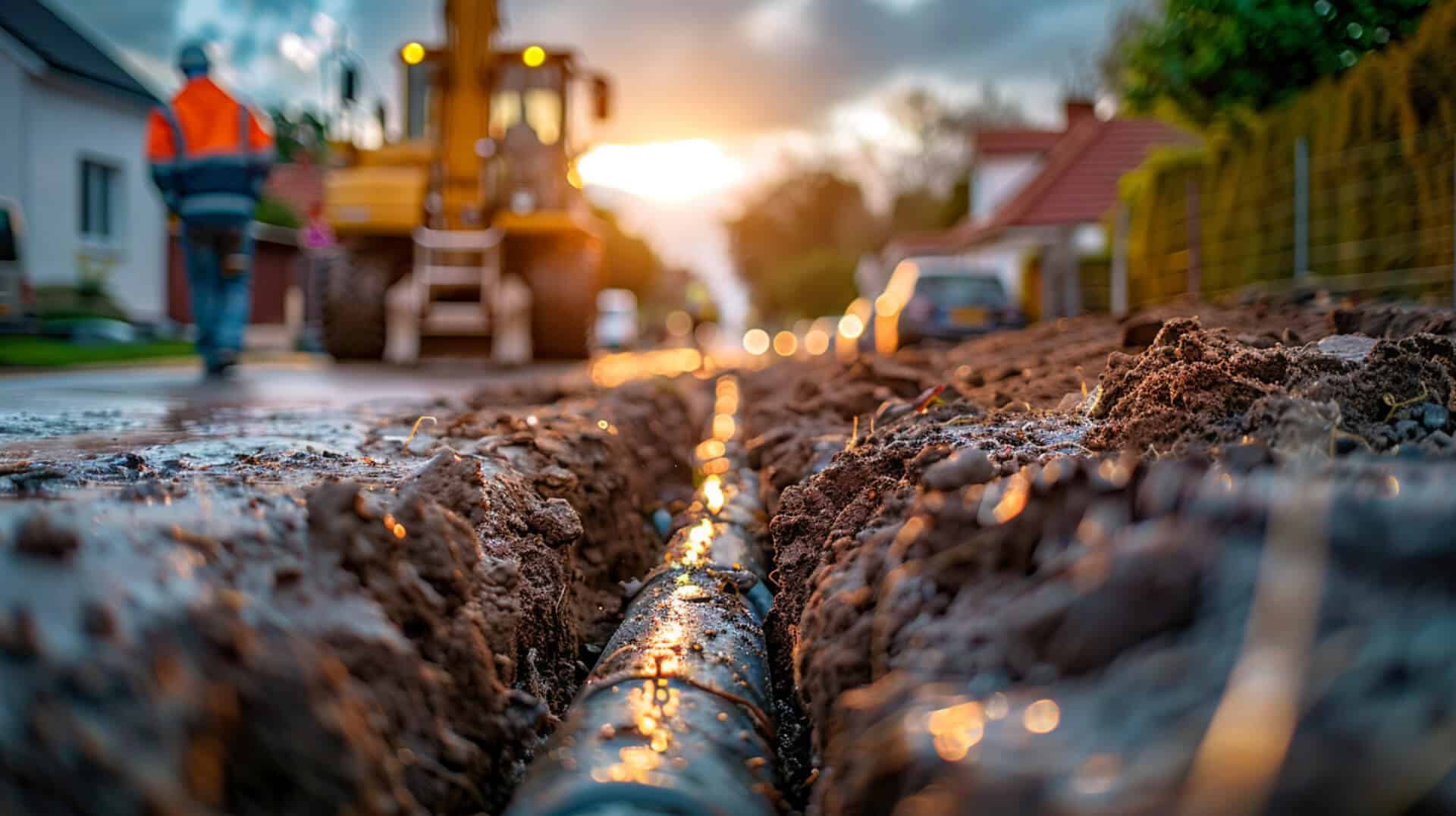
Mineral Build-Up in Old Pipes
Mineral build-up is a common issue in old pipes, particularly in areas with hard water. Understanding the types of minerals involved and their effects on drainage can help in managing and preventing blockages.
What Minerals Commonly Build Up in Old Pipes?
The primary minerals that accumulate in old pipes include:
- Calcium: Forms hard, chalky deposits known as limescale.
- Magnesium: Contributes to the formation of scale along with calcium.
- Iron: Can cause rust and sediment build-up, particularly in older metal pipes.
How Does Hard Water Contribute to Mineral Deposits?
Hard water contains high levels of dissolved minerals, primarily calcium and magnesium. When hard water flows through pipes, these minerals can precipitate out and adhere to the pipe walls, forming scale. Factors that exacerbate this process include:
- High Mineral Content: Areas with naturally hard water have higher concentrations of calcium and magnesium.
- Temperature: Hot water accelerates the precipitation of minerals, leading to faster build-up.
What Are the Effects of Mineral Build-Up on Drainage?
Mineral build-up can have several adverse effects on drainage systems:
- Reduced Pipe Diameter: Accumulated scale narrows the internal diameter of pipes, restricting water flow.
- Increased Blockages: Scale provides a rough surface that can trap debris, leading to frequent blockages.
- Decreased Efficiency: Reduced water flow can affect the performance of appliances and fixtures.
What Methods Can Be Used to Remove or Prevent Mineral Deposits?
Several methods can help manage and prevent mineral build-up in old pipes:
- Descaling Agents: Chemical descalers can dissolve existing mineral deposits.
- Water Softeners: Devices that remove calcium and magnesium from water, preventing scale formation.
- Regular Cleaning: Flushing pipes with hot water and vinegar can help reduce minor build-up.
- Pipe Replacement: In severe cases, replacing old pipes with materials less prone to scaling, such as PVC, may be necessary.
By understanding the causes and effects of mineral build-up, property owners can take proactive measures to maintain clear and efficient drainage systems.
Foreign Materials and Debris
Foreign materials and debris are common causes of blockages in old pipes. Understanding the types of materials that can cause these issues and how they enter the drainage system is essential for effective prevention and maintenance.
What Types of Foreign Materials Commonly Cause Blockages?
Several types of foreign materials can lead to blockages in old pipes:
- Debris: Includes dirt, stones, and leaves.
- Household Items: Such as wipes, diapers, hygiene towels, and paper towels.
- Food Particles: Grease, fat, and food scraps.
- Bathroom Debris: Hair, soap scum, and skin flakes.
- Foreign Objects: Toys, jewellery, and other small items.
How Do These Materials Enter the Drainage System?
Foreign materials can enter the drainage system through various means:
- Improper Disposal: Flushing non-degradable items down toilets or washing them down sinks.
- Environmental Factors: Leaves and debris entering outdoor drains during storms.
- Accidental Entry: Small objects falling into drains or being flushed accidentally.
What Are the Preventive Measures to Avoid Foreign Material Blockages?
Preventive measures can help avoid blockages caused by foreign materials:
- Proper Disposal: Dispose of non-degradable items in the trash rather than flushing them.
- Use of Strainers: Instal strainers in sinks and showers to catch debris.
- Avoid Washing Fats/Oils: Dispose of grease and fat in containers rather than washing them down the sink.
- Regular Cleaning: Clean drains regularly to remove accumulated debris.
How Can Regular Inspections Help Identify and Remove Debris?
Regular inspections are crucial for maintaining clear drainage systems:
- Routine Checks: Conduct regular inspections to identify potential blockages early.
- CCTV Surveys: Use CCTV cameras to inspect hidden parts of the plumbing system.
- Professional Cleaning: Hire professionals for thorough cleaning and maintenance.
By understanding the types of foreign materials that cause blockages and implementing preventive measures, property owners can maintain efficient drainage systems and avoid costly repairs.
Pipe Freezing and Thawing
Freezing and thawing cycles can significantly impact old pipes, leading to blockages and other issues. Understanding how these processes affect pipes and implementing preventive measures can help maintain efficient drainage systems.
How Does Freezing and Thawing Affect Old Pipes?
Freezing and thawing cycles can cause several problems in old pipes:
- Expansion and Contraction: Water expands when it freezes, putting pressure on the pipe walls. When it thaws, the contraction can cause cracks and leaks.
- Material Fatigue: Repeated cycles of freezing and thawing weaken the pipe material, making it more susceptible to damage.
- Blockages: Ice formation can block the flow of water, leading to backups and potential overflows.
What Are the Signs of Damage Caused by Freezing?
Identifying the signs of freeze-related damage can help in early intervention:
- Cracks and Leaks: Visible cracks or leaks in pipes, especially after a freeze.
- Reduced Water Flow: Noticeable decrease in water pressure or flow.
- Damp Areas: Wet spots or dampness around pipes, indicating leaks.
- Noisy Pipes: Unusual sounds, such as banging or gurgling, when water flows through the pipes.
What Preventive Measures Can Be Taken to Protect Pipes in Winter?
Several preventive measures can help protect pipes from freezing:
- Insulation: Insulate pipes, especially those in unheated areas, to prevent freezing.
- Heat Tape: Apply heat tape or cables to pipes to keep them warm.
- Seal Gaps: Seal any gaps or cracks in walls and foundations to prevent cold air from reaching pipes.
- Drip Faucets: Allow faucets to drip during extreme cold to keep water moving and prevent freezing.
How Can Property Owners Address Freeze-Related Blockages?
Addressing freeze-related blockages promptly can prevent further damage:
- Thawing Pipes: Use a hairdryer or heat lamp to gently thaw frozen pipes. Avoid open flames.
- Professional Help: Contact a professional plumber if the blockage is severe or if there are signs of significant damage.
- Regular Maintenance: Conduct regular inspections and maintenance to identify and address potential issues before they escalate.
By understanding the effects of freezing and thawing on old pipes and implementing preventive measures, property owners can maintain efficient drainage systems and avoid costly repairs.
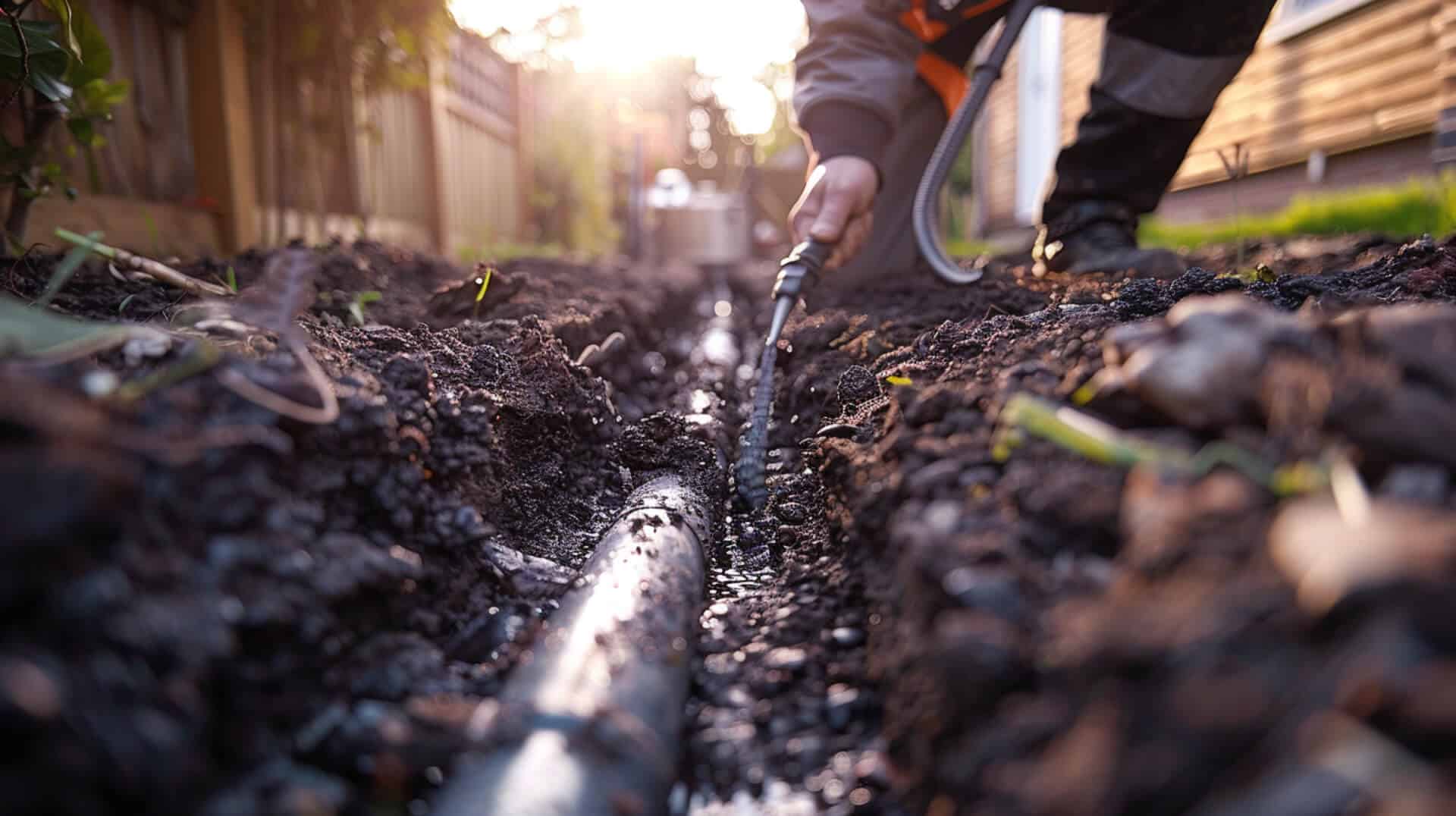
Heavy Rain and Storms: Overwhelming Drainage Systems
Heavy rain and storms can significantly impact drainage systems, particularly in older properties. Understanding how these weather events contribute to blockages and implementing preventive measures can help maintain efficient drainage.
How Do Heavy Rain and Storms Contribute to Blockages?
Heavy rain and storms can overwhelm drainage systems in several ways:
- Excess Water Volume: Sudden influx of water can exceed the capacity of drainage systems.
- Debris Accumulation: Leaves, dirt, and other debris can be washed into drains, causing blockages.
- Erosion: Soil erosion can lead to sediment entering and clogging pipes.
What Are the Signs That a Drainage System Is Overwhelmed?
Identifying the signs of an overwhelmed drainage system can help in early intervention:
- Slow Drainage: Water takes longer to drain from surfaces.
- Water Pooling: Accumulation of water in areas that should drain quickly.
- Backflow: Water flowing back into sinks, toilets, or other fixtures.
- Unusual Noises: Gurgling sounds from drains indicate trapped air and blockages.
What Preventive Measures Can Be Taken to Handle Heavy Rainfall?
Several preventive measures can help manage the impact of heavy rainfall on drainage systems:
- Regular Cleaning: Clear drains and gutters of debris before the rainy season.
- Drain Covers: Instal covers to prevent debris from entering drains.
- Proper Grading: Ensure the property is graded to direct water away from buildings.
- Rainwater Harvesting: Use rain barrels or other systems to capture and store rainwater.
How Can Property Owners Improve Drainage Capacity?
Improving drainage capacity can help manage heavy rainfall more effectively:
- Larger Pipes: Upgrade to larger diameter pipes to handle increased water volume.
- Additional Drains: Instal additional drains in areas prone to water accumulation.
- Sump Pumps: Use sump pumps to remove excess water from basements or low-lying areas.
- Permeable Surfaces: Use permeable paving materials to allow water to soak into the ground rather than running off.
By understanding the impact of heavy rain and storms on drainage systems and implementing preventive measures, property owners can maintain efficient drainage and avoid blockages.
Incorrect Pipe Installation and Its Consequences
Incorrect pipe installation can lead to various issues, including blockages and structural damage. Understanding common installation errors and their consequences can help property owners ensure proper installation and maintenance.
What Are Common Errors in Pipe Installation?
Several common errors can occur during pipe installation:
- Misalignment: Pipes not properly aligned can cause leaks and blockages.
- Improper Slope: Incorrect slope can lead to poor drainage and water accumulation.
- Inadequate Support: Lack of proper support can cause pipes to sag and eventually break.
- Use of Incorrect Materials: Using materials not suited for the specific application can lead to premature failure.
How Do These Errors Lead to Blockages and Other Issues?
Installation errors can result in several problems:
- Blockages: Misaligned or improperly sloped pipes can cause debris to accumulate, leading to blockages.
- Leaks: Poor connections and inadequate support can cause leaks, leading to water damage.
- Structural Damage: Water leaks can weaken building structures and foundations.
- Reduced Efficiency: Incorrect installation can reduce the efficiency of the drainage system, leading to frequent maintenance issues.
What Are the Signs of Incorrect Pipe Installation?
Identifying signs of incorrect installation can help in early intervention:
- Frequent Blockages: Recurrent clogs in the same locations.
- Water Damage: Visible water stains or damp areas around pipes.
- Unusual Noises: Gurgling or banging sounds from pipes.
- Poor Drainage: Slow draining sinks, tubs, and toilets.
How Can Property Owners Ensure Proper Installation?
Ensuring proper pipe installation involves several steps:
- Hire Professionals: Engage qualified and experienced plumbers for installation.
- Use Quality Materials: Ensure the use of appropriate and high-quality materials.
- Regular Inspections: Conduct regular inspections to identify and address potential issues early.
- Follow Standards: Adhere to local building codes and standards for pipe installation.
By understanding common installation errors and their consequences, property owners can take proactive measures to ensure proper installation and maintain efficient drainage systems.
Preventive Measures for Maintaining Old Pipes
Maintaining old pipes is essential to prevent blockages and ensure the efficient functioning of drainage systems. Implementing regular maintenance routines and proper waste disposal practices can significantly reduce the risk of issues.
Regular Maintenance Routines
Regular maintenance is crucial for the longevity and efficiency of old pipes. Recommended routines include:
- Routine Inspections: Conduct regular visual inspections to identify signs of wear, leaks, or blockages.
- Cleaning and Descaling: Use descaling agents to remove mineral build-up and prevent scale formation.
- Pipe Relining: Reinforce existing pipes with a new lining to prevent leaks and blockages.
- Professional Cleaning: Schedule professional cleaning services to ensure thorough maintenance.
Proper Waste Disposal
Proper waste disposal practices can prevent blockages and maintain clear drains:
- Avoid Flushing Non-Degradable Items: Dispose of items like wipes, diapers, and hygiene products in the trash.
- Use Fat Traps: Collect grease and fat in containers rather than washing them down the sink.
- Instal Strainers: Use strainers in sinks and showers to catch debris like hair and food particles.
- Dispose of Hazardous Materials Properly: Avoid pouring chemicals, paints, and solvents down the drain.
Tools and Products for Maintenance
Several tools and products can help maintain clear drains and prevent blockages:
- Drain Cleaners: Use enzymatic or chemical drain cleaners to break down organic matter.
- Plungers: Keep a plunger handy for clearing minor blockages.
- Drain Snakes: Use a drain snake to remove stubborn clogs.
- Water Softeners: Instal water softeners to reduce mineral build-up in areas with hard water.
Professional Inspections and Cleaning Services
Professional services play a vital role in maintaining old pipes:
- CCTV Surveys: Conduct CCTV inspections to identify hidden issues within the plumbing system.
- High-Pressure Water Jetting: Use high-pressure water jetting to clear blockages and clean pipes thoroughly.
- Drain Mapping: Create a detailed layout of the drainage system to identify potential problem areas.
- Regular Maintenance Contracts: Engage professional services for regular maintenance to ensure the longevity and efficiency of the drainage system.
By following these preventive measures, property owners can maintain old pipes effectively, reducing the risk of blockages and ensuring efficient drainage.
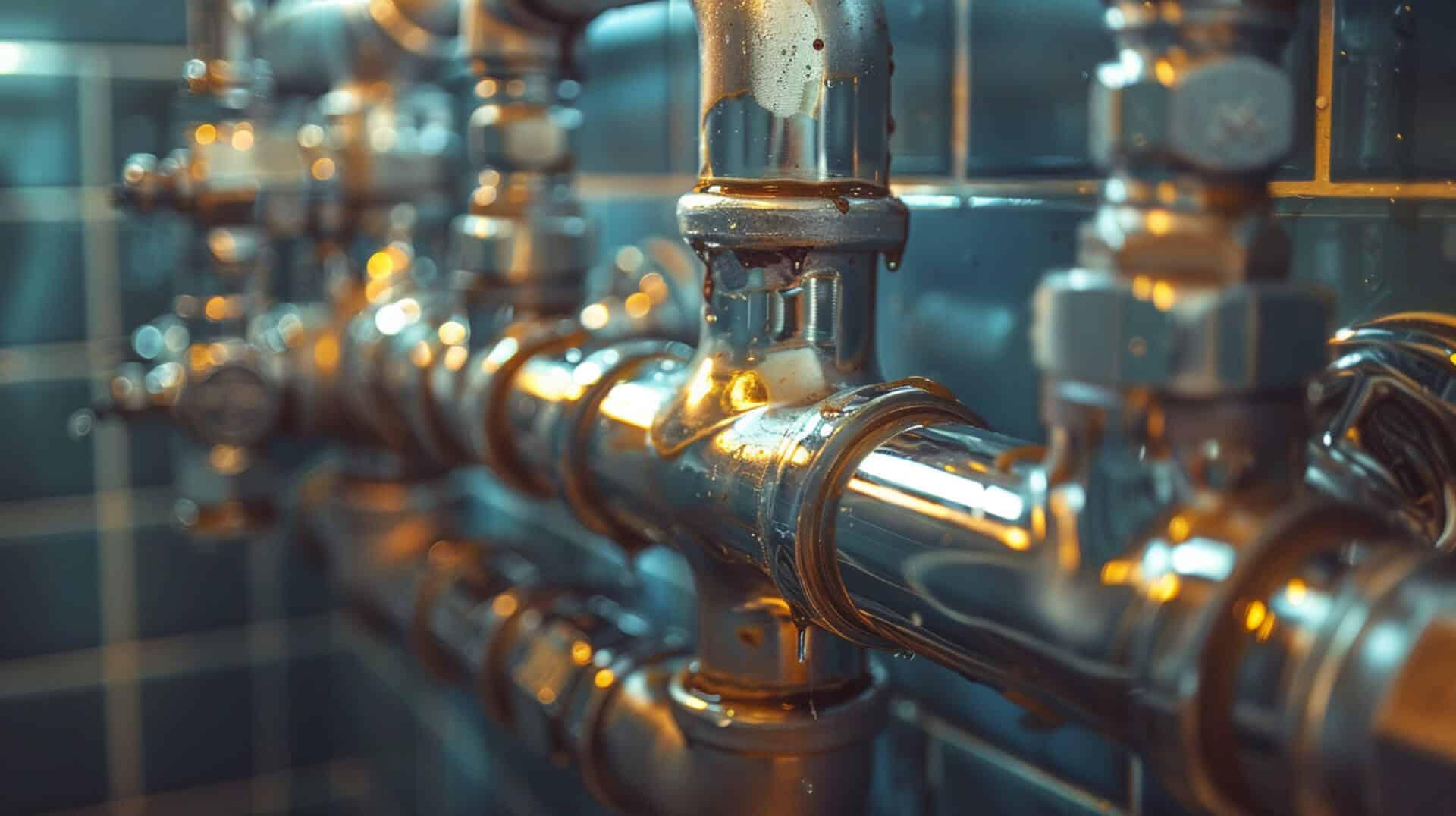
Technical Solutions for Clearing Blockages
Clearing blockages in old pipes often requires specialised tools and techniques. Understanding the most effective methods can help property owners address and prevent drainage issues.
Effective Tools for Clearing Blockages
Several tools are commonly used to clear blockages in old pipes:
- Jet Rodding Machines: Utilise high-pressure water jets to dislodge and remove blockages.
- Drain Snakes: Flexible augers that can navigate through pipes to break up and remove obstructions.
- Plungers: Effective for clearing localised blockages in sinks and toilets.
How Do Jet Rodding Machines and Drain Snakes Work?
Jet rodding machines and drain snakes are essential tools for clearing blockages:
- Jet Rodding Machines: These machines use high-pressure water jets to cut through blockages and flush debris out of the pipes. They are particularly effective for removing grease, sludge, and tree roots.
- Drain Snakes: Also known as plumbing augers, drain snakes are flexible cables with a coiled end that can be inserted into pipes. They are manually or mechanically rotated to break up and remove blockages.
Role of Drain Cameras and CCTV Inspections
Drain cameras and CCTV inspections play a crucial role in diagnosing and addressing blockages:
- Drain Cameras: Small, waterproof cameras attached to flexible cables that can be inserted into pipes to provide a visual inspection of the interior.
- CCTV Inspections: Detailed surveys using closed-circuit television (CCTV) to identify the location and cause of blockages, cracks, and other issues within the drainage system.
How Can Drain Lining and Descaling Repair and Maintain Pipes?
Drain lining and descaling are effective methods for repairing and maintaining old pipes:
- Drain Lining: A process where a resin-coated liner is inserted into the damaged pipe and inflated to form a new, seamless pipe within the old one. This method repairs cracks and prevents future blockages.
- Descaling: The removal of mineral build-up and scale from the interior of pipes using specialised tools and chemicals. This process restores the pipe’s diameter and improves water flow.
By utilising these technical solutions, property owners can effectively clear blockages and maintain the efficiency of their drainage systems.
Conclusion: Final Thoughts on Preventing and Addressing Blockages
Understanding the common causes of blocked drains in old pipes is essential for effective maintenance and prevention. Property owners, business owners, and facility managers can implement various solutions to address and prevent blockages.
Key Takeaways from This Guide
- Common Causes: Ageing pipes, tree roots, mineral build-up, foreign materials, pipe freezing, heavy rain, and incorrect installation.
- Indicators of Blockages: slow drainage, bad smells, water pools, damp and mould, unusual sounds, and damp floors and walls.
- Preventive Measures: Regular maintenance, proper waste disposal, use of plug screens, avoiding chemicals, water softening, routine cleaning, and immediate action on minor issues.
- Technical Solutions: Jet rodding machines, drain snakes, plungers, drain cameras, CCTV inspections, drain mapping, drain lining, and descaling.
Implementing Solutions
Property owners, business owners, and facility managers can implement these solutions by:
- Regular Inspections: Conduct routine checks for signs of wear, leaks, or blockages.
- Professional Services: Engage qualified professionals for thorough cleaning, inspections, and repairs.
- Proper Waste Disposal: Ensure proper disposal of non-degradable items and hazardous materials.
- Maintenance Tools: Use appropriate tools and products for regular maintenance and cleaning.
Importance of Regular Maintenance
Regular maintenance is crucial for preventing blockages and ensuring the efficient functioning of drainage systems. It helps in:
- Early Detection: Identifying potential issues before they escalate.
- Longevity: Extending the lifespan of pipes and drainage systems.
- Efficiency: Maintaining optimal water flow and preventing frequent blockages.
Steps to Take if Blockages Persist
If blockages persist despite preventive measures:
- Professional Assessment: Contact a professional plumber for a thorough assessment.
- Advanced Techniques: Utilise advanced techniques like CCTV inspections and jet rodding.
- Pipe Replacement: Consider replacing severely degraded pipes with modern materials.
By following these guidelines, property owners can effectively prevent and address blockages in old pipes, ensuring efficient and reliable drainage systems.
